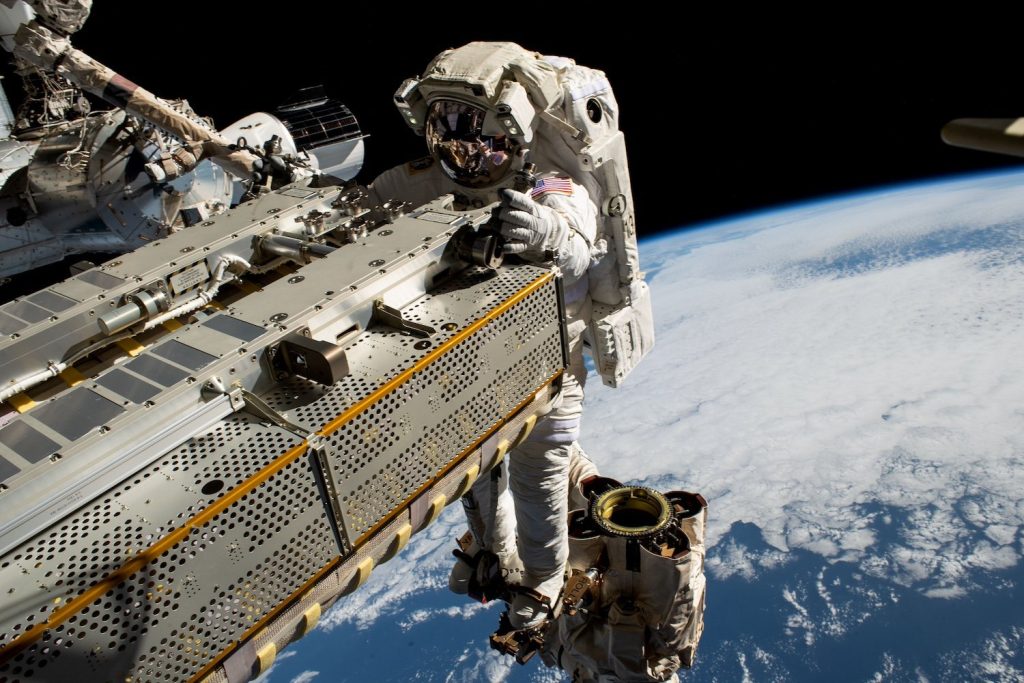
NASA Set to Resume ISS Spacewalks in 2025 After Terrifying Spacesuit Leaks (Image Credit: Gizmodo-com)
Following a months-long hiatus, NASA astronauts are ready to step outside of the International Space Station (ISS) once again and conduct some orbital handiwork.
NASA plans to resume spacewalks in 2025 after a spacesuit leak forced the agency to suspend extravehicular activity in June to address the issue. During a press conference earlier this week, Bill Spetch, operations and integration manager of NASA’s ISS program, told reporters that NASA is planning its next set of spacewalks “early next year,” Space.com reported.
“It’s just a matter of when is the right timing,” Spetch is quoted as saying. NASA replaced a seal and umbilical cord connecting the spacesuit to the ISS, and the leaky spacesuit was successfully repressurized, according to Spetch.
Hopefully that resolves the issue, which could pose a life-threatening risk to the spacewalking astronauts. In June, two NASA astronauts were preparing to exit the ISS for a spacewalk, which was abruptly called off due to a water leak in the service and cooling umbilical unit on astronaut Tracy Dyson’s spacesuit. “There’s water everywhere,” Dyson could be heard saying during the live feed from the ISS.
NASA’s leaky spacesuits, sad to say, are a recurring theme on the ISS. In May 2022, NASA suspended spacewalks outside the ISS following a series of potentially life-threatening incidents of water leaking into astronauts’ helmets during their spacewalks. NASA astronaut Raja Chari and European Space Agency astronaut Matthias Maurer were installing hoses on a radiator beam valve module outside the space station on March 23, 2022 when Maurer—who was venturing out on his first spacewalk—noticed some water and dampness inside his visor towards the end of the seven-hour spacewalk.
Earlier in 2013, ESA astronaut Luca Parmitano noticed a water leak inside his helmet that forced him to abruptly end the spacewalk. Parmitano was able to re-enter the ISS airlock but was having difficulty breathing as 1.5 liters of water had formed inside his helmet. “I feel it covering the sponge on my earphones and I wonder whether I’ll lose audio contact. The water has also almost completely covered the front of my visor, sticking to it and obscuring my vision,” Parmitano recounted.
That same suit worn by Parmitano nearly drowned another astronaut two years later. NASA astronaut Terry Virts, donning spacesuit #3005, noticed free-floating droplets of water and a damp absorption pad in his helmet at the conclusion of his spacewalk.
It’s clear that NASA has a spacesuit problem. The suits worn by astronauts on board the ISS are more than 40 years old and are rapidly nearing the end of their service life. NASA’s extravehicular mobility units (EMU) were first designed in the 1970s and used for its space shuttle program. Recently, NASA turned to its commercial partners to develop new spacesuits, handing contracts to Axiom Space and Collins Aerospace in June 2022 worth a combined value of $3.5 billion. Collins Aerospace is falling behind on its task, while Axiom debuted the new threads last year.
The spacesuits are meant to be worn by astronauts as part of the upcoming Artemis missions to the Moon, but they will also fly to the ISS beforehand for a trial run on the ISS. For now, the astronauts will continue spacewalking in low Earth orbit while wearing the outdated spacesuits, but hopefully the temporary fixes will keep them safe.








